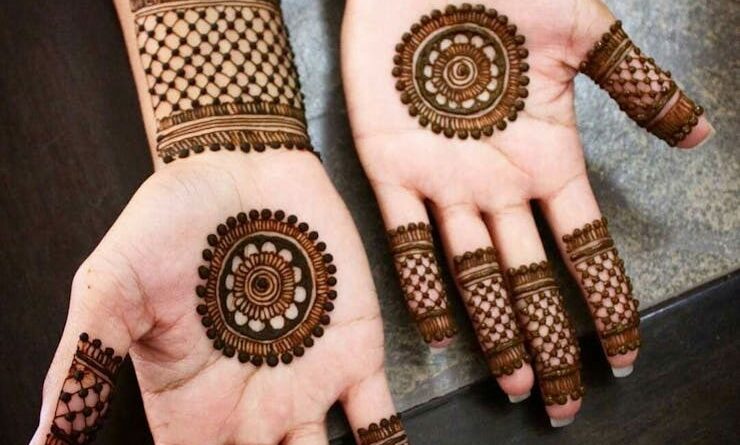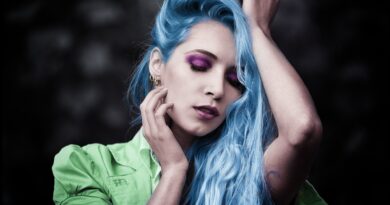Stunning Bengali Mehndi Designs: Traditional & Ultramodern Patterns for Every Occasion
Mehndi, also known as henna, has been an integral part of South Asian culture for centuries. One of the most unique and enchanting variations of mehndi designs comes from Bengali culture, where intricate and detailed henna patterns have been perfected over generations. The Bengali mehndi design is known for its vibrant and emblematic motifs, blending traditional elements with contemporary styles. Whether for weddings, festivals, or casual events, Bengali mehndi designs are the perfect mix of elegance and art.
Table of Contents
The Literal Significance of Mehndi in Bengali Culture
Mehndi is not just an ornamental application; it holds deep artistic and spiritual significance in Bengali culture. It’s believed that henna brings good luck and positivity, especially during auspicious occasions. In Bengali tradition, mehndi is applied during weddings, festivals like Poila Boishakh (Bengali New Year), Durga Puja, and other celebrations.
Historically, mehndi designs were simple, with basic patterns applied to the hands and feet. Over time, however, these designs have evolved into complex and detailed works of art, reflecting both the artistic history and cultural expression of Bengali women. The use of mehndi has therefore transformed from a simple beauty ritual to a form of artistic expression.
Traditional Bengali Mehndi Designs
Traditional Bengali mehndi designs are characterized by their intricate and flowing patterns, often inspired by nature, mythology, and religious symbolism. These designs are generally rich in detail and incorporate a variety of elements such as flowers, paisleys, and mandalas. Let’s explore some of the most iconic elements of traditional Bengali mehndi designs.
- Floral and Vine Patterns
One of the hallmarks of Bengali mehndi is its abundant use of floral motifs. The designs are often created with delicate flowers, vines, and leaves. These elements represent growth, abundance, and the beauty of nature. Floral patterns can range from tiny, intricate flowers to large, sprawling vines that cover the hands and feet. - Paisleys and Swirls
Paisleys, which are teardrop-shaped patterns with a twisted design, are frequently seen in traditional Bengali mehndi. These motifs are often surrounded by intricate swirls and circles that give the design a flowing, almost hypnotic appearance. Paisleys symbolize fertility and prosperity in Bengali culture, making them a popular choice for weddings and other joyous occasions. - Mandalas
Mandalas are geometric patterns that radiate from a central point, symbolizing harmony and balance. Traditional Bengali mehndi frequently incorporates mandala designs, especially on the palms or the back of the hands. The circular shapes and symmetry of mandalas represent the cycles of life, making them a significant and spiritual element in mehndi art. - Bengali Folk Art Influences
Bengali folk art, such as the renowned Pattachitra paintings, heavily influences traditional mehndi designs. These designs include detailed depictions of mythological stories, animals, birds, and rural life. Often, a bride’s mehndi will feature motifs that tell a story about her heritage or love life, making the design both personal and deeply symbolic. - Intricate Cutlet Patterns
Bengali mehndi designs frequently cover not only the palms and feet but also the fingers and toes. Cutlet patterns are delicate and can include small floral elements or intricate net designs. These designs not only enhance the beauty of the hands but also signify the refinement and grace of the wearer.
Ultramodern Bengali Mehndi Designs
While traditional Bengali mehndi is rich in history and symbolism, modern designs have evolved to incorporate more contemporary aesthetics and influences. With globalization, new trends and techniques have emerged, and Bengali mehndi artists have adapted their designs to suit the preferences of today’s brides and fashion-conscious individuals.
- Minimalist Patterns
In contrast to the thick and complex traditional designs, modern Bengali mehndi embraces minimalist patterns. These designs feature clean lines, simple geometric shapes, and minimal detail, creating an elegant and sophisticated look. Minimalist mehndi designs are ideal for women who want to add a touch of beauty without overwhelming their hands with too much detail. - Fusion with Contemporary Art
Modern Bengali mehndi artists are known for experimenting with a fusion of various art forms. They incorporate elements from modern art, abstract patterns, and even artistic symbols from outside Bengal. For example, motifs such as mandalas may be fused with abstract shapes, or floral patterns may be combined with peacock feathers, creating a blend of traditional and contemporary aesthetics. - Bold and Dark Mehndi
Modern trends in Bengali mehndi also embrace bolder and darker tones. While traditional mehndi is often applied with a lighter shade, modern designs tend to use more intense and darker henna, creating a dramatic effect. The darker tone enhances the intricacy of the design, making it more visually striking, especially in wedding photos. - Use of Glitter and Embellishments
To elevate the look, modern Bengali mehndi designs often incorporate decorative elements such as glitter, stones, and beads. These additions give a touch of glamour and shine, making them perfect for brides who want their mehndi to stand out during festivals or celebrations. - Arabic and Indo-Western Influences
Bengali mehndi has also adapted influences from Arabic and Indo-Western mehndi styles. The clean, broad lines of Arabic mehndi are often combined with the intricate detailing of Bengali mehndi, creating designs that are both bold and intricate. This fusion style is ideal for brides who want a contemporary look while retaining the artistic essence of Bengali culture.
Popular Bengali Mehndi Designs for Different Occasions
Bengali mehndi designs are versatile and can be adapted to suit various occasions. Whether it’s a wedding, celebration, or casual gathering, mehndi adds an extra layer of beauty and meaning to the event. Here are some popular Bengali mehndi designs for different occasions:
- Bengali Wedding Mehndi
Weddings are the most significant occasion for mehndi application in Bengali culture. The bride’s mehndi is an integral part of her bridal attire, symbolizing beauty, happiness, and abundance. Bengali wedding mehndi designs are often elaborate, with motifs that cover the hands and feet entirely.For Bengali wedding mehndi, brides often choose designs with symbolic motifs, such as pairs of birds or a bride and groom’s figures. The use of floral patterns and paisleys is common, and some brides may opt for a design that features the names or initials of the couple hidden within the intricate detailing.
- Poila Boishakh (Bengali New Year)
On Poila Boishakh, Bengali women often beautify their hands with mehndi to celebrate the New Year. The mehndi designs for this occasion tend to be lighter and more cheerful, with delicate floral patterns, geometric shapes, and circular motifs representing new beginnings and prosperity. - Durga Puja
Durga Puja, one of the most important festivals in Bengal, is another occasion where mehndi is applied. During this celebration, Bengali women typically wear various outfits and decorate their hands with mehndi featuring a mix of traditional and modern patterns. Durga Puja mehndi designs often include motifs of Goddess Durga, flowers, and intricate mandalas. - Casual Festivals and Parties
For casual occasions such as parties, birthday celebrations, or cultural events, lighter and less intricate mehndi designs are often chosen. Minimalist floral patterns, small mandalas, or simple paisley designs are perfect for adding elegance without being too overpowering. These designs are ideal for those who want to enjoy the beauty of mehndi without committing to heavy or elaborate patterns.
How to Care for Your Bengali Mehndi
Once your beautiful Bengali mehndi design is applied, it’s essential to take proper care of it to ensure it lasts as long as possible. Here are a few tips to help you maintain the rich color and beauty of your mehndi:
- Avoid Water
For the first few hours after applying mehndi, avoid contact with water. This allows the henna to set and the color to darken. - Use a Lemon-Sugar Mixture
After the henna has dried, you can apply a mixture of lemon juice and sugar to help darken the stain and set the design. - Stay Away from Harsh Chemicals
Avoid using soap, lotion, or other harsh chemicals on the mehndi for at least 24-48 hours after application. - Keep it Warm
Heat can help the henna darken more quickly. You can wrap your hands in a cloth or gloves to retain heat and help the design darken.
Conclusion
Bengali mehndi designs are a perfect blend of tradition and modernity, offering stunning patterns for every occasion. From intricate floral motifs to contemporary minimalist designs, Bengali mehndi showcases the rich artistic heritage of Bengal while embracing modern trends. Whether it’s a wedding, celebration, or casual gathering, Bengali mehndi adds beauty and significance, making it an integral part of the festivity.
If you’re planning to adorn yourself with a beautiful mehndi design, remember to choose one that reflects your personal style and the occasion. Whether you opt for a traditional or modern look, your Bengali mehndi will undoubtedly leave a lasting impression




